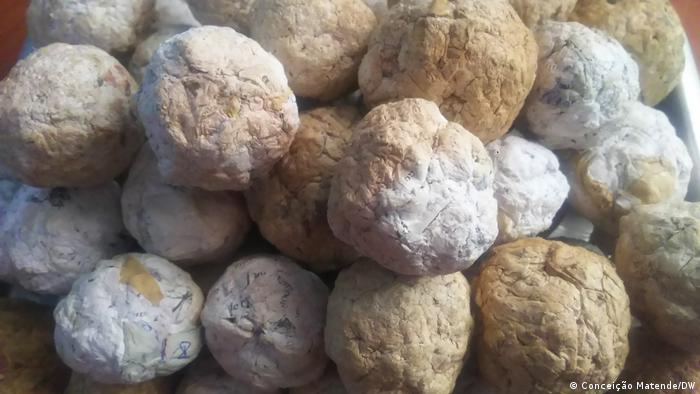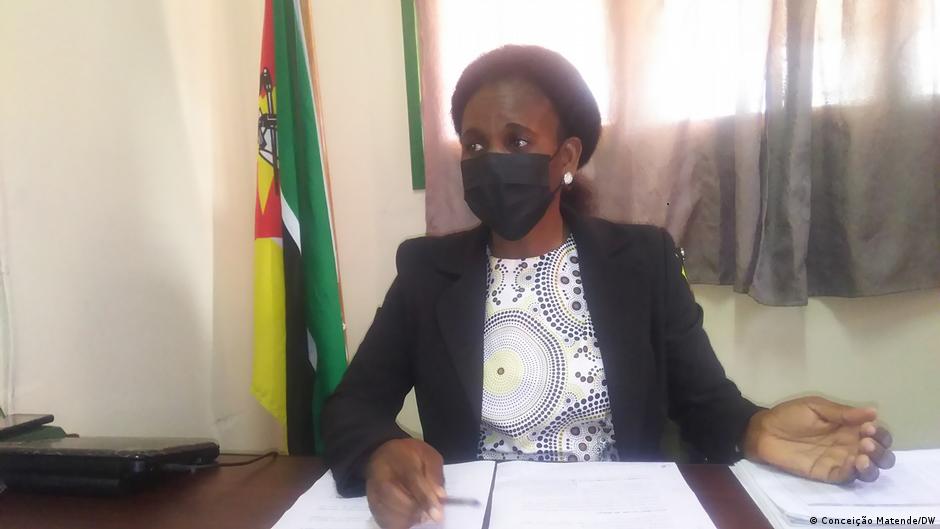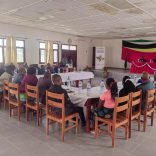Mozambique: Man arrested for trying to sell 12 elephant tusks - Watch
Niassa: Mozambican activists produce sustainable charcoal

"Environmentally friendly" charcoal from paper litter. [Photo: DW]
To combat the use of illegally logged wood and preserve forests, Mozambican activists are developing various initiatives, including the production of charcoal from waste paper.
The production of charcoal in Mozambique is associated with a series of harms – mainly when it takes place clandestinely. In addition to the damage to the environment from the use of wood from illegal deforestation, there are reports of slave labour in its production.
More than 40 cubic metres of wood were seized by forest inspectors in the last six months in the Mozambican province of Niassa, according to the National Agency for Environmental Quality Control (AQUA). Alice Mapondo, the agency’s Niassa delegate, says that 15 vehicles illegally transporting charcoal and wood of various kinds were sanctioned in the first half of 2021.
According to Mapondo, the number of seizures increased by almost 50% compared to last year. Many vehicles were seized for lack of proper journey logs [guias de marcha], which are specific authorizations for the transport of wood.
“This year, we inspected 15 charcoal and wood vehicles. From January to June, 41.8 cubic metres of wood were seized. We are talking about mbila, mbau and mugonha. Last year, it was 23.3 cubic metres. This year, there was growth, because we increased inspection actions at fixed posts and through mobile brigades,” Mapondo explained.
Sustainable coal
Several initiatives designed to reduce the environmental and social impacts of charcoal production are underway across the country. The objective is to devise an environmentally friendly charcoal, a product that has quality but does not destroy nature.

For environmentalist Faustino Nassera, there are other ways of exploiting forest resources that can have a low impact on forests. And he warns of the consequences of accelerated deforestation without proper management.
“If we have situations of this nature, a very high amount of wood seized with a number that scares us, so much so that in the future we may have problems, I can say that it is a lack of awareness in the community itself, and advocate the continuity of certain actions that civil society has taken with the provincial service for the environment,” he says.
Nassera encourages communities in Niassa to organize associations to promote a culture of sustainable exploitation of forest resources. “We proved, or example, that it was possible to produce charcoal by pruning, without having to cut down the entire tree,” he says.
Craft production
The Association of Youth for the Environmental Development of Niassa (AJUDAN) took the initiative to produce charcoal from waste paper. The idea arose within the scope of paper recycling and the attempt to protect forest resources, minimizing the felling of trees to produce charcoal.
According to AJUDAN coordinator Manuel Carlos, the form of production of ecological charcoal is still artisanal. Waste paper, egg and other boxes are combined and the mixture is manually mixed.
“We mix used paper thrown out by institutions. We add cardboard and egg boxes, mix it all up and leave it for about two to three days. Then we mash the paper and, after two hours, roll it up in our hands into about the size of charcoal,” he explains.
Even with ecological charcoal, society still does not believe that charcoal made from paper is effective and economical. Some activists think it is time for an awareness campaign on the issue.












Leave a Reply
Be the First to Comment!
You must be logged in to post a comment.
You must be logged in to post a comment.